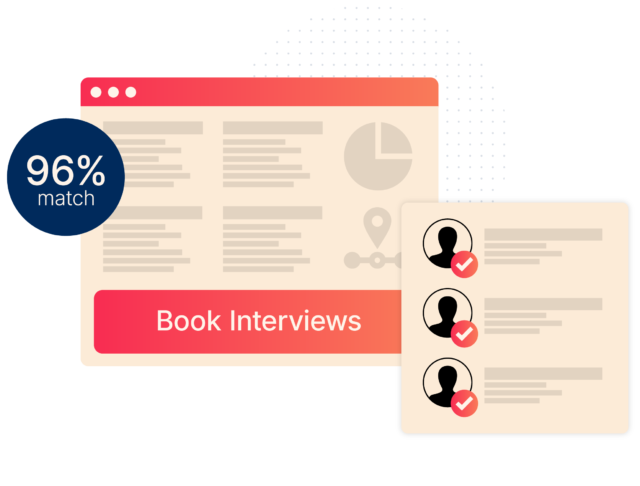Virtual Recruiting Challenges: The Great Resignation and Continued COVID-19 Disruptions

Everywhere you look, there are signs of today’s labor shortage. “Now Hiring” signs hang predominantly in the windows of many restaurants and retailers. Service is excruciatingly slow. Turnover rates are high.
These are all signs of what is being termed by professionals as “the Great Resignation” — a side-effect of the continued global pandemic that is leaving many companies without the workers they need to run their businesses properly. Among the many challenges that come with the Great Resignation, it’s becoming harder than ever before to recruit and maintain employees.
What Is the Great Resignation (And Why Is It Happening)?
The Great Resignation is a term used to describe the current economic state, where many employees choose to walk away from their jobs rather than endure current working conditions. Some 4.3 million Americans — 2.9% of the workforce — quit their jobs in August alone.
Many factors have led to the Great Resignation. Employees who have walked away from their jobs often report feeling:
- Disrespected or taken advantage of in their workplace
- Overworked
- Burnt out
- Underpaid or lacking in benefits
Although symptomatic of overall issues in the workplace, the ongoing pandemic has exacerbated many of these problems. Uncertainty regarding personal health and the pandemic and increased family pressures have forced many employees to decide between working on the front lines each day or protecting their families. As more people resign, those who remain feel the increased pressure to perform their jobs and those of their missing coworkers, often without any pay increase or change to their benefits.
What Are Some of the Challenges Virtual Recruiters Are Facing Today?
With significantly more jobs available than candidates willing to take them, virtual recruiting has become a challenge. Virtual recruiters want to find the best possible candidates for a position. Still, they have to sell the job to the candidates just as much as they have to be convinced, by the candidates, to offer a position.
Meanwhile, the Great Resignation makes it difficult to stick to diversity and inclusion goals. As brands scramble to find any employees willing to take on jobs — especially low-paying, high-labor jobs and jobs that can’t be done remotely — virtual recruiters may find themselves dealing with High Volume Hiring. They may be forced to make decisions quickly, without much time to reflect on how their choices will affect the brands five or 10 years down the road. Meanwhile, with women leaving their jobs at twice the rate of men, keeping an even ratio of women and men in the workplace has become a nearly-impossible task.
What Are Some Recruiting and Candidate Engagement Strategies Virtual Recruiters Should Use?
In light of the Great Resignation, virtual recruiters need to find new ways to engage candidates and recruit them into the workforce. Here’s what you need to know.
Addressing Worker Fears
Right now, employees have an advantage in the workplace. There is a greater demand for jobs than a supply of willing and capable employees, meaning that candidates can better say “no” to opportunities that don’t meet their needs.
All the recruiting and engagement strategies in the world won’t save a brand that isn’t willing to meet today’s employees halfway. So the first thing recruiters need to do is talk to the brand leaders and decision-makers they’re recruiting for to determine how they’re addressing worker fears. Some major selling points recruiters should advertise if possible include:
- Flexible working hours
- Benefits, especially medical benefits
- Opportunities to work remotely
Consider Texting
Texting with potential candidates can keep them more engaged in the recruiting process. Studies show that recruiters who text have ten times the number of engaged candidates each week. Use texting to remind employees of interview times and offer updates regarding timelines or potential job benefits.
Bring in Current Employees
Candidates trust current employees to accurately depict what it’s like to work for a company. They can best explain what a day in the life of that job is, what the company culture feels like, and why it’s a great place to work. So leverage happy employees to speak for a brand.
Move Quickly
No one wants to be in employee limbo, and today’s candidate lifecycle is shorter than it once was. This means that you need to work efficiently and communicate effectively. It’s also critical to provide feedback about potential obstacles to hiring, whether or not you’re considering a candidate. Treating candidates well and providing same-day information about whether they’re being seriously considered or not shows that you value your brand and care about candidates’ needs.
Prop Up Your Business With Quality Recruiting
With ongoing Covid-19 concerns, more brands are using video and phone recruiting processes rather than in-person recruiting. This challenging medium, combined with the challenges of the Great Resignation, means that recruiters have to bring their A-game every day and focus on new hiring trends. Engaging candidates in the hiring process and finding new ways to provide workplace flexibility and benefits allows companies to leverage the available workforce and find the right candidates for their open positions.



